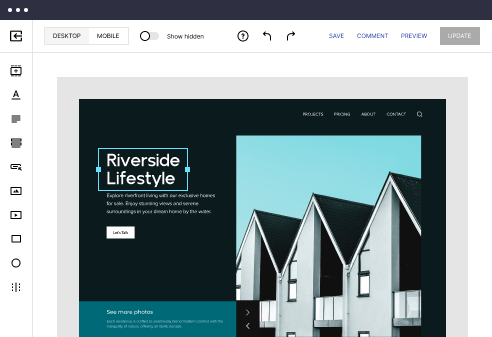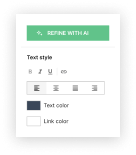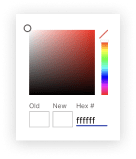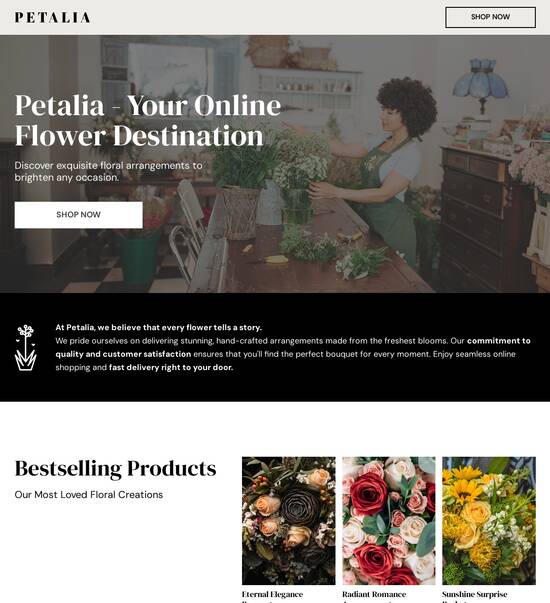
HTML page template for Audit managers
Use TemplateAbout template
Attract clients and showcase your skills with style using our landing page templates for Audit managers. Let's convert those visitors into clients!
Recommended templates
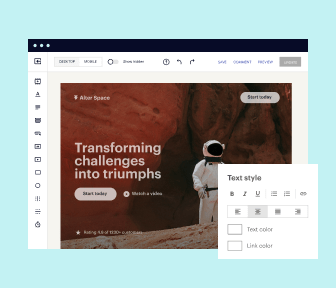
Easy to build without coding
With the intuitive drag-and-drop builder, anyone on your team can create high-converting pages without any knowledge of code or design. Make enhancements to your landing page with custom widgets using Javascript, HTML/CSS, or third-party scripts.
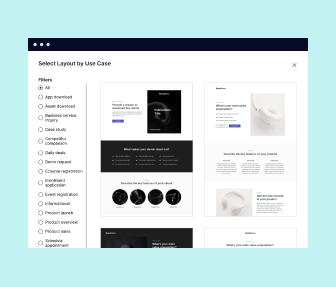
Multiple layouts for any industry and goal
Select from 500+ landing page layouts built to boost conversions across industry-specific scenarios. Customize them by adjusting fonts, adding images, and generating on-brand content with the AI assistant. Quickly scale with Instablocks® and Global Blocks that you can save, reuse, and update globally.
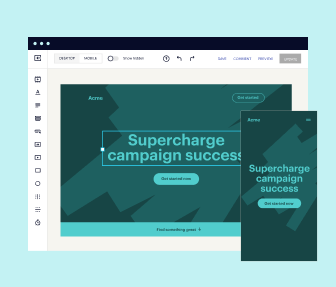
Loads fast and looks polished on any device
Every template is responsive, which means they present professionally on any device and load blazingly fast with our Thor Render Engine. You can also power them up with Google AMP technology to deliver an unparalleled mobile experience and drive higher conversions.

Robust analytics & experimentation
Get real-time updates and reporting across all your devices, showing the number of visitors, conversions, cost-per-visitor, and cost-per-lead. Launch AI-powered experiments, run A/B tests, and use heatmaps to analyze user behavior, then optimize your landing page to maximize conversions.
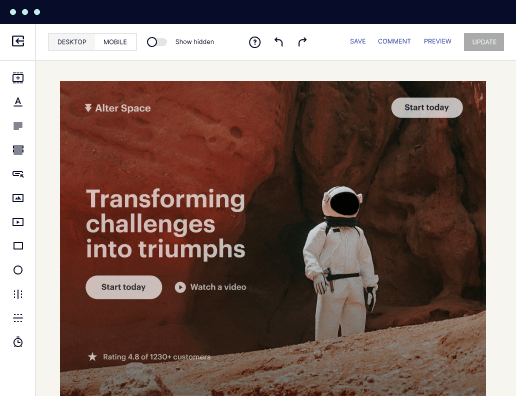
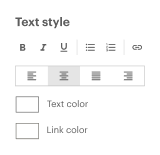
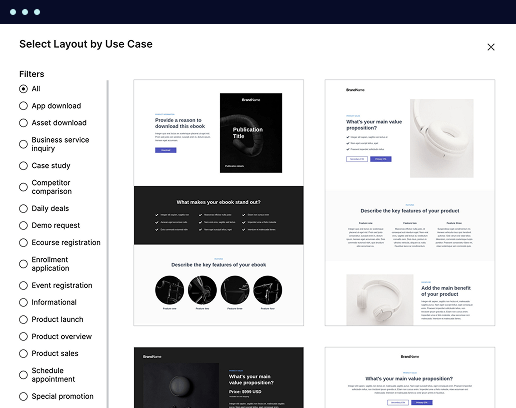
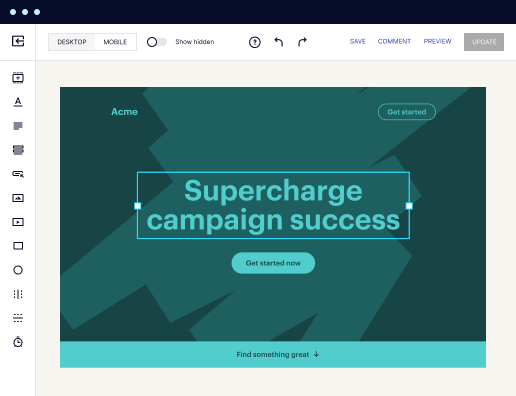

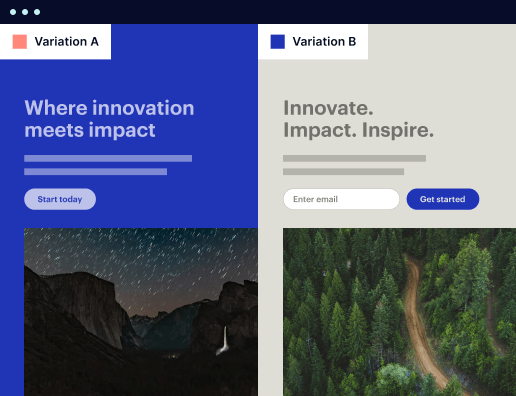
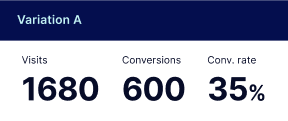
Easy to build without coding
With the intuitive drag-and-drop builder, anyone on your team can create high-converting pages without any knowledge of code or design. Make enhancements to your landing page with custom widgets using Javascript, HTML/CSS, or third-party scripts.
Multiple layouts for any industry and goal
Select from 500+ landing page layouts built to boost conversions across industry-specific scenarios. Customize them by adjusting fonts, adding images, and generating on-brand content with the AI assistant. Quickly scale with Instablocks® and Global Blocks that you can save, reuse, and update globally.
Loads fast and looks polished on any device
Every template is responsive, which means they present professionally on any device and load blazingly fast with our Thor Render Engine.
Robust analytics & experimentation
Get real-time updates and reporting across all your devices, showing the number of visitors, conversions, cost-per-visitor, and cost-per-lead. Launch AI-powered experiments, run A/B tests, and use heatmaps to analyze user behavior, then optimize your landing page to maximize conversions.
All the features you need to build audit css design
Explore more featuresLearn how to build auditing website templates
FAQs
Leading the way in building high-performing landing pages





A step-by-step guide to landing page optimization with Instapage
Creating compelling landing pages is essential for driving conversions. Instapage equips marketers with powerful tools to optimize their campaigns, ensuring that every visitor counts. This guide will walk you through the effective use of Instapage for maximizing your ROI and enhancing your digital marketing strategy.
Understanding the importance of landing pages
Landing pages play a crucial role in the customer journey. They serve as the first point of contact between your audience and your offerings. With high-conversion landing pages, you can capture leads, promote services, and significantly improve your marketing performance.
- Increased conversion rates: Well-designed landing pages can lead to higher conversions by effectively communicating your value proposition.
- Targeted messaging: Customized landing pages allow you to align your message with specific audience segments, which increases relevance.
- Improved ad performance: Linking ads to relevant landing pages boosts your ad performance metrics.
Getting started with Instapage
To begin using Instapage, familiarize yourself with its features. This platform offers over 100 high-converting templates and an easy-to-use drag-and-drop interface that allows marketers of all skill levels to create professional landing pages.
- Select a template: Choose from an extensive library of conversion-focused templates tailored for different industries.
- Utilize drag-and-drop functionality: Modify elements with ease to match your branding and messaging.
- Integrate lead capture forms: Use pre-built lead generation elements to gather information effortlessly.
Optimizing your landing pages for success
Optimization is key to maximizing the effectiveness of your landing pages. Instapage offers various features that allow you to experiment and refine your pages continually.
- Conduct A/B testing: Experiment with different headlines, images, and call-to-action buttons to discover what performs best.
- Analyze heatmaps: Utilize heat mapping tools to understand visitor behavior and focus on what engages your audience.
- Use detailed analytics: Measure traffic, conversion rates, and user interactions to refine your strategy.
By effectively utilizing Instapage's features, you can create personalized and highly effective landing pages that cater to your audience's needs.
Start transforming your digital marketing efforts today with Instapage. Leverage its powerful tools to create landing pages that not only attract visitors but also convert them into customers.
People also ask about HTML page template for Audit managers
HTML page template for audit managers
The role of HTML page templates in streamlining audit management
Audit management involves comprehensive processes that require meticulous attention to detail, systematic documentation, and effective communication among team members. Given the complexities of audits, the need for efficiency cannot be overstated. Every detail from planning, execution, to reporting must be meticulously organized to minimize errors and enhance clarity. HTML page templates serve as a vital organizational tool, providing a structured format that supports auditors in managing their tasks and communicating findings effectively.
Utilizing digital templates also streamlines the audit process. Templates can standardize documentation, ensuring that every audit remains consistent regardless of the team or project. This not only saves time and minimizes errors but also enhances collaboration among team members, making the audit process smoother and more efficient.
Understanding the significance of HTML templates in audit management
The creation of robust audit documentation involves numerous components, including data collection, analysis, and presentation. Each of these components must adhere to specific standards, and this is where HTML templates become invaluable. Such templates help to establish a consistent layout and design, leading to clearer communication and better accessibility for all stakeholders involved. Moreover, the user-friendly nature of HTML means that even those with minimal technical knowledge can create and manage effective templates.
Moreover, with the increasing reliance on digital solutions in business, having HTML templates for audits becomes increasingly relevant. These templates can be easily adapted and updated, reflecting any changes in audit guidelines or organizational needs. This adaptability is crucial in ensuring audits remain compliant with the latest regulations and standards, ultimately preserving the integrity of the auditing process.
Key features of HTML page templates for audit managers
When considering the design of HTML page templates specifically for audit managers, several key features come to the forefront. These features enhance accessibility and create a more engaging user experience. The ability to create a structured document is paramount, but it is just the beginning. Below are critical elements that make HTML templates particularly effective in the realm of audit management.
Document structure and accessibility - Semantic HTML ensures that templates are not only visually appealing but also accessible to individuals with disabilities, promoting inclusivity.
Visual aesthetic customization - The provision for using various colors and fonts allows brands to maintain their identity and ensure their reports are engaging.
Dynamic content loading - Integrating code like iolazy allows for optimized loading times, significantly improving user experience.
Document structure and accessibility
A well-structured document is essential for audit managers. The proper use of semantic HTML makes documents easier to navigate and understand. This is particularly important in audit management, where clarity is crucial. Structure not only aids in visual organization but also ensures that the documents are compliant with accessibility standards. Utilizing features such as document.addeventlistener can further enhance the interactivity of audit reports.
Scaling accessibility includes enabling rich user interactions through JavaScript frameworks, which can make the documents more engaging and informative. For example, adding event listeners can trigger interactive elements like pop-ups or expandable sections, providing users with deeper insights without cluttering the main document area.
Visual aesthetic customization
One of the most appealing aspects of HTML templates for audit managers is the ability to customize visual aesthetics. By incorporating branding elements such as specific colors and fonts, audit reports can create a professional image that resonates with stakeholders. This aspect goes beyond mere visuals; it helps instill confidence in the audit process. A well-designed report signals professionalism and meticulous work.
Whether it’s selecting a color palette that reflects the company ethos or choosing fonts that enhance readability, these design choices allow for greater engagement. Users are more likely to engage with an aesthetically pleasing template, ensuring they absorb the information presented.
Dynamic content loading
Loading times can significantly impact user experience, particularly when it comes to detailed audit reports laden with data and visual content. Using strategies such as iolazy for lazy loading optimizes performance by ensuring that only the visible content loads initially. This means that users can start engaging with the report faster, rather than waiting for all elements to load.
Moreover, ensuring a seamless DOMContentLoaded experience is crucial. It allows for smoother interactions within the document as each element becomes available for engagement. The more responsive and faster a report is, the more likely it is to maintain user focus and interest.
The technical backbone: HTML builder for audit pages
HTML builders represent foundational tools in creating audit pages. For audit managers looking for customization, choosing the right HTML builder can significantly influence the crafting of templates. These builders come with various functionalities that allow users to easily drag and drop elements, customize layouts, and incorporate multimedia content without needing extensive coding knowledge.
The key functionalities of HTML builders include intuitive interfaces, pre-built components for common audit elements, and responsive design templates that adapt seamlessly to different devices. This results in audit reports that are not only visually appealing but also functional, allowing audit teams to focus more on content and less on technical hurdles.
Crafting effective HTML templates for audit reports
Designing headers and footers in HTML templates can enhance the professionalism of audit reports. Headers should succinctly present vital information such as the title of the report, audit period, and contacts. This sets the stage for what follows, guiding local and external stakeholders through the document's content.
Footers, on the other hand, are key to providing compliance information or additional contacts for queries. Implementing best practices requires striking a balance between informative content and visual simplicity. Accessible, understated designs can facilitate navigation throughout the report.
Arranging content into columns can also significantly improve data presentation. By leveraging grid systems, information can be displayed clearly, allowing for easy comparisons and insights. This could involve using CSS frameworks that simplify layout designs, allowing audit managers the flexibility to showcase data prominently.
The integration of multimedia elements
Incorporating multimedia elements like videos and images can significantly enhance the effectiveness of audit presentations. Videos can provide overviews, walkthroughs, or explanations, making complex data more digestible for the audience. As users can often retain information conveyed through visuals better, adding relevant video content is a strategy many successful audit managers employ.
Images can also play a crucial role in augmenting written content. They provide alternative methods of conveying information that can support textual data, such as charts or diagrams illustrating findings. This multimodal approach enriches the overall engagement level of audit reports, ensuring critical information is communicated effectively.
Solving common problems with audit management templates
Performance optimization is a significant concern for any audit manager working with digital templates. One of the common issues faced is slow loading times that can frustrate users. Implementing lazy loading techniques is essential to improve load speeds, as it ensures that only necessary elements are displayed upfront while others are fetched as needed.
Additionally, ensuring effective layout designs can enhance user experience dramatically. A clean, well-organized audit report allows users to navigate information easily, making findings and insights readily accessible. Prioritizing user engagement through optimized layouts is a core strategy for maintaining interest in audit documents.
User engagement challenges may also arise from traditional audit reporting formats that lack interactivity. Implementing interactive features, such as expandable sections or clickable summaries, encourages user interaction. Best practices include employing polls or embedded forms to solicit user feedback directly through the audits.
The audit management workflow: step-by-step template utilization
Selecting the right template is an important first step for effective audit management. Audit managers should evaluate templates based on their specific needs, including criteria such as complexity of the audit, data presentation requirements, and team dynamics. This initial selection process can make or break the effectiveness of the audit documentation.
Customizing templates to highlight key metrics and findings can dramatically improve how results are communicated. By adjusting layouts and designs according to the focus of the audit, managers can ensure readers know what to pay attention to. Process integration also plays a vital role, as effective collaboration among audit teams can be facilitated through shared templates. This enables seamless communication and collective data review.
Assessing the impact of templates on audit efficiency
Measuring the transformation of audit processes post-template adoption can illuminate the benefits of these tools. Audit managers should document improvements in terms of time savings, reduced errors, and enhanced clarity within report presentation. Establishing metrics and benchmarks prior to implementation offers valuable insights into the overall efficiency of the audit processes.
Case studies showcasing successful implementations of HTML templates in audit management can provide real-world evidence of their impact. With structures in place for continuous improvement, teams can identify areas where templates fall short and iterate on their formats and functionality.
Future trends in HTML templates for audit management
Looking forward, several emerging technologies are poised to influence the design and functionality of HTML templates for audit managers. As digital transformation accelerates, incorporating automation and artificial intelligence into templates will likely become standard. This entails not just enhancing functionalities for less manual input but also integrating analytics that help audit managers derive insights directly from data.
Furthermore, customization through adaptive learning technologies could see templates evolve over time, potentially adjusting to best fit specific audit contexts. These adaptations may offer recommendations or template modifications based on previous audits' outcomes, leading to higher efficiency and improved accuracy in auditing processes.
Practical tools and resources for creating HTML templates
For audit managers looking to create effective HTML templates, numerous software and platforms are available that support the development of tailored templates. Many of these tools offer user-friendly interfaces and extensive libraries of pre-designed components, which can save significant time and effort. Popular options include design platforms and content management systems that allow for easy integration of HTML templates into wider audit documentation efforts.
Downloading and installing HTML templates efficiently often comes down to selecting the right providers. Audit managers should ensure they are utilizing reputable sources that offer templates tailored to auditing processes, including myriad customization options. By focusing on these practical resources, audit staff can enhance their documentation processes and improve reporting outcomes.
Ready to skyrocket conversions?
Supercharge your ad campaigns with high-performing landing pages
Get started